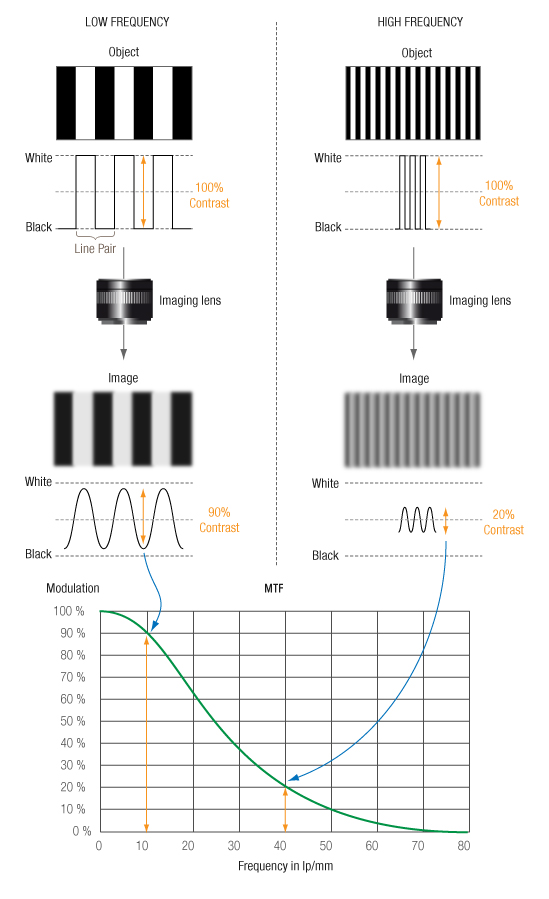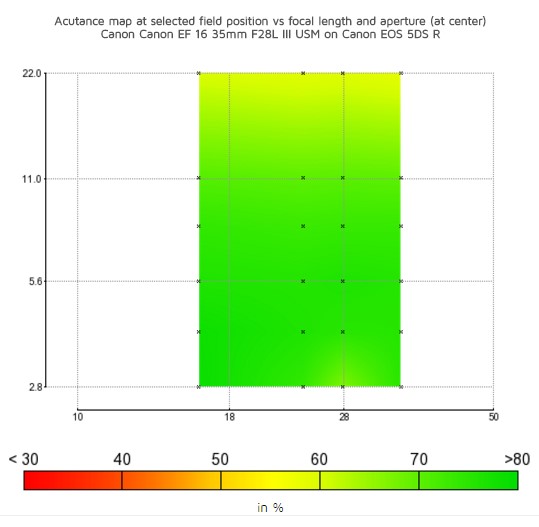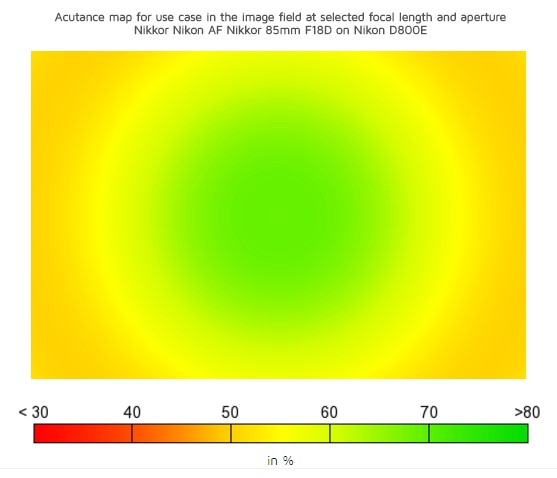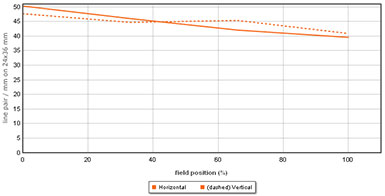Sharpness is based on the MTF measurement. Let’s start with a practical measurement experiment to help describe what MTF is. If we look at a series of black and white stripes with varying spatial frequency and fixed contrast (same reflectance ratio between black and white, independent of the spatial frequency), we can see that the image of high-frequency stripes has a lower contrast than that for low-frequency stripes. For very high frequencies, the image eventually becomes (almost) uniform, with an intermediate level between black and white, which our eyes perceive as a shade of gray.
The MTF precisely describes the contrast attenuation: for each spatial frequency, the MTF plots the ratio of the output modulation versus the test object modulation.

The value of the MTF at frequency 0 is always 100% since a flat field is considered to have been reproduced perfectly, with no intensity loss. Attenuation due to lens transmission is measured separately.
MTF depends on light wavelength, field position, spatial orientation, focal length and aperture value.
DSLR lenses usually have a radial symmetry, which means that field dependency can be summarized by the MTF at different distances to the image center.
For the DxOMark sharpness score, we compute MTF in horizontal and vertical directions by examining the spatial response of the camera to a perfect edge. This measurement follows ISO standard 12233.
Any difference in MTF between the horizontal and the vertical directions is a sign of astigmatism.
What is sharpness?
Sharpness is a subjective quality attribute of an image or a lens. Sharpness indicates the visually perceived quality of details of an image or details reproduced by a lens. It is associated with both resolution and contrast of reproduced details (within an image or by a lens).
The DxOMark score for Sharpness is based on the Perceptual Megapixel (P-Mpix) concept that weights the Modulation Transfer Function (MTF) of the lens with the human visual acuity. Read more about Perceptual Megapixels.
What is acutance?
An objective measure of sharpness which takes into account the sensitivity of the human visual system to specific spatial frequencies and the viewing distance of an image. Edge acutance refers to the ability of a photographic system to show a sharp edge between contiguous areas of low and high illuminance. Texture acutance refers to the ability of a photographic system to show details without noticeable degradations.
What is resolution?
The resolution of a camera is defined by the size of the smallest detail that the camera can optically discriminate. ISO standard 12233 defines the limiting resolution as the first frequency such that the contrast attenuation is 95% (hence a MTF value of 5%). In practice, this value is very small and is also sensitive to measurement noise
Because of field aberrations (such as field curvature), the value of the limiting resolution and acutance depends on the field position.
Presentation of results
We map the acutance on a color scale as a function of focal length and aperture value. We make measurements for several field positions.


We plot the acutance as a function of the radial field position, taking into consideration horizontal and vertical directions.
We make measurements for several focal lengths and aperture values.



DXOMARK encourages its readers to share comments on the articles. To read or post comments, Disqus cookies are required. Change your Cookies Preferences and read more about our Comment Policy.